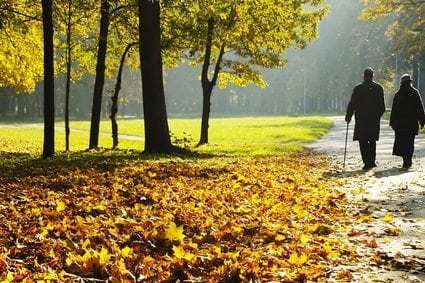As children, we fall countless times. We stumble as we learn to walk. We trip up stairs. We fall during soccer games and on ice skating rinks. As adults, we’re a bit more steady on our feet, but still we trip over cords and slip on loose rugs. These falls sometimes result in bruises, aches, and even broken bones, but our bodies mend quickly and we soon forget that we fell at all! For the elderly, however, falls are far more concerning; even a simple fall can have dreadful consequences. Plus, if seniors aren’t in great health, they’re also more prone to falls. But why are falls so dangerous for the elderly? Scroll down to find out.
Why Are Falls So Dangerous for the Elderly?
According to the Centers for Disease Control and Prevention, one in three adults aged 65+ falls each year. These falls are the leading cause of fatal and nonfatal injuries amongst older adults, and in 2011, about 22,900 adults died from unintentional injuries resulting from falls (source).
As you can see, falls that are commonplace for a young person can be extremely dangerous for the elderly. Many of these seniors are already frail or have pre-existing disabilities or medical complications (like heart disease), so even seemingly minor falls can result in severe injuries or even death. Unlike young people, seniors’ bodies simply aren’t able to withstand and recover from the trauma. These falls can result in lacerations, hip fractures, and head traumas, amongst other injuries. And in many cases, the initial injury isn’t the cause of death; the associated problems are to blame.
How to Prevent Dangerous Falls
To reduce the likelihood of a dangerous fall, we encourage seniors to do the following:
- Exercise regularly. Leg strength and balance are crucial, so exercises like walking, weight-lifting, and Tai Chi are very beneficial. Explore exercises that will strengthen your bones, improve coordination, and increase endurance.
- Test your vision. If you haven’t been to the optometrist lately, stop in soon to have your eyes evaluated. Weak eyesight and blurry vision can cause stumbles and falls.
- Check your medications. Ask your doctor or pharmacist to review your medications, so that they can identify any prescriptions or over-the-counter drugs that cause dizziness or drowsiness. Find alternatives to these medications if possible. Also, always take your medications as prescribed.
- Evaluate your environment. Reduce your home’s clutter to prevent stumbles. Remove (or fix) any rugs that might slip or cause trips. Add grab bars in the bathroom, beside the tub and toilet. Add railings to both sides of stairways. And finally, add a non-skid bath mat to your shower.
- Choose your shoes wisely. Your shoes should be supportive, low-heeled, and provide good friction. Avoid walking around your house in socks, stockings, or slippery slippers.
- Turn on the lights. All stairwells should be adequately lit, but it’s also important to turn on lights when you get up in the middle of the night. Avoid “feeling your way” through the dark, as you could trip over a loose electrical cord, a fallen object, or a thick rug.
– – – – –
I hope these tips help you (or a loved one) avoid dangerous falls. If you do fall, be sure to report it to your doctor, even if you do not hurt yourself.
Are you looking for an assisted living facility in the Midwest? Be sure to check out Hearthside Senior Living Place. Each of our eight retirement communities includes a Health and Wellness program, fitness center, exercise classes, fun events and activities, and healthy food options. Plus, our facilities are designed to prevent falls with carefully selected flooring and single-story buildings. To learn more about our commitment to healthy living, contact Hearthside Senior Living Place today.

